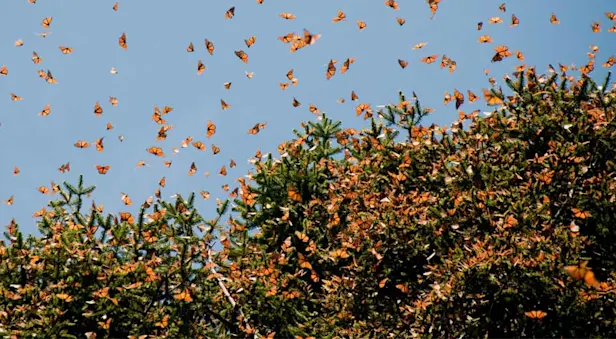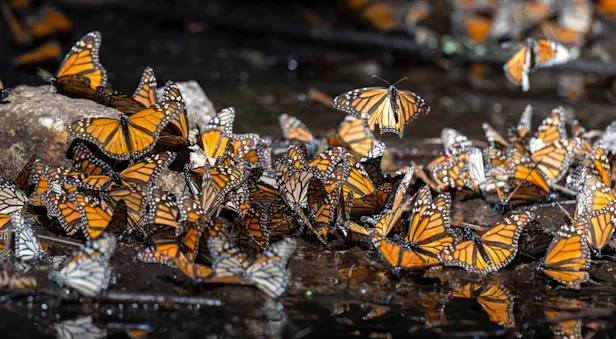
Know Before You Go


WWF in Action: Monarch Butterflies
How Mexico Is Protecting Monarchs From Unsustainable Logging
Every year, monarch butterflies take one of the most amazing migrations on Earth. Fluttering between 1,200 to 2,800 miles over the course of two months, they leave their summer breeding areas in Canada and the United States to return to hibernation colonies in the forests of central Mexico.
These same forests are inhabited and managed by agrarian communities. Local landownership is divided between ejidos (communal forestry and agriculture endeavors), indigenous communities, and small property owners. As the communities struggle with widespread poverty and lack of employment opportunity, they lean heavily on the forest and its resources for survival—the same forests in which the monarchs congregate.
To protect the area from unsustainable logging that threatens the butterflies’ unique habitat, the Mexican government took action. The Monarch Butterfly Biosphere Reserve was established, and later expanded with WWF support.
To assist local communities in keeping the forest intact, WWF helps establish alternative income-generating ventures—including sustainable mushroom and tree nurseries.
Today, nine mushroom nurseries provide protein to local households and income from sales. Mushroom producers have access to seeds, bio-material, and training with financial support from the Mexican government and WWF, and participation of local scientists. They learn cultivation techniques, administration processes, and how to manage the facilities’ equipment.
At the same time, 10 tree nurseries now produce around 1.5 million native trees every year for reforestation of local areas, with income supporting many full- and part-time jobs. WWF forest engineers help with the work of growing trees—including seed planting, bagging and plant location, installing irrigation systems, and managing administrative tasks.
For the communities involved in these endeavors there is a new appreciation of the forest they call home—and a change of conscience about how to use the forest in a sustainable way. Sustainable forest management can ensure their communities’ continued wellbeing—as well as the winter habitat of the butterflies that make their area so unique.
“It’s not only protecting the monarchs, it’s not only protecting the forest, but it’s helping the local communities develop in an economic and social way. Without their participation, without their commitment, we cannot move forward,” says Eduardo Rendón-Salinas, head of WWF-Mexico’s Monarch Butterfly Program.
See the path that monarch butterflies take on their annual migration. © WWF

































